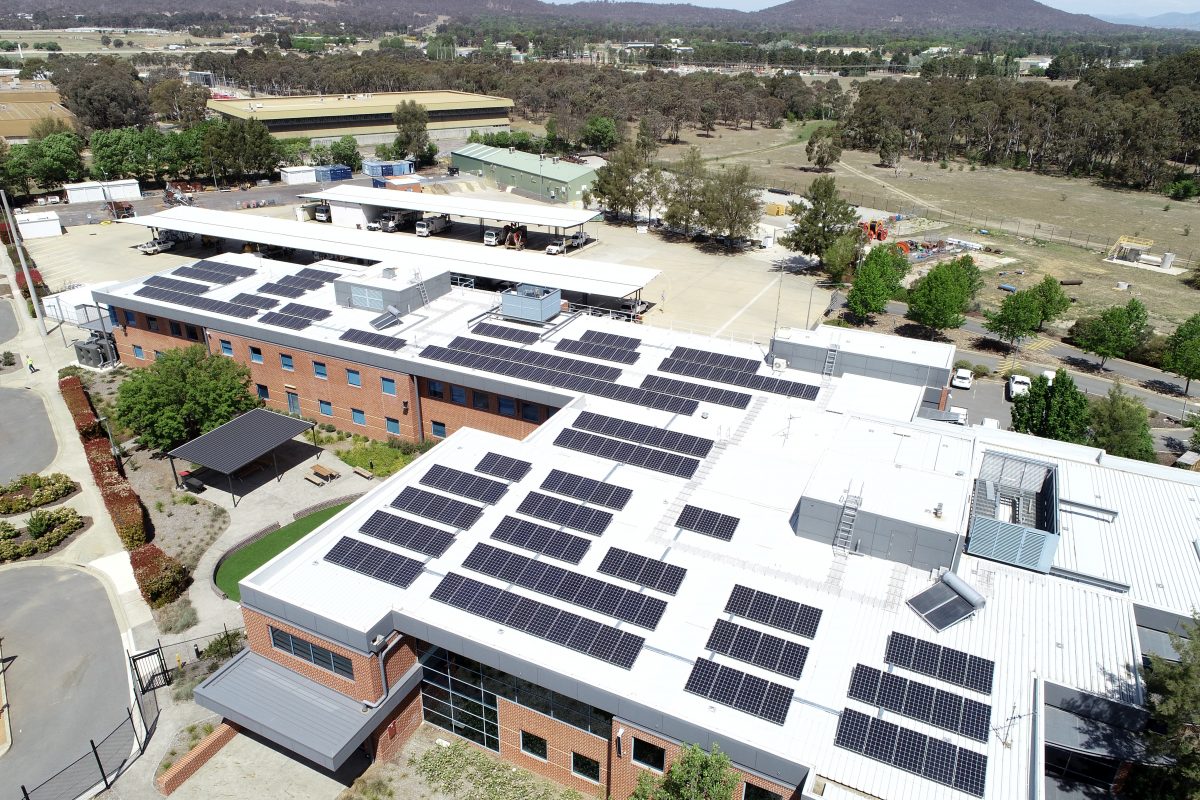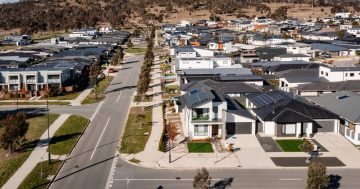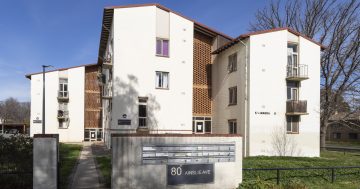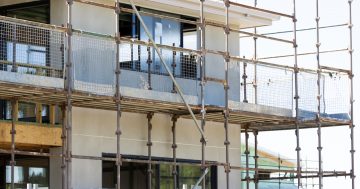
New homes in Canberra will have to achieve a minimum 7-star energy efficiency rating. Photo: Ian Bushnell.
All new ACT homes will now need to meet higher energy efficiency standards and allow more space so people with disabilities can enter them and move around more easily.
The changes are part of the ACT’s adoption from 15 January of the new National Construction Code in full.
They form the second tranche of changes to the code after the ACT adopted a range of significant technical changes in May 2023.
All new homes will now require a minimum 7-star equivalent energy rating, which should translate to better-insulated homes to retain warmth in the colder months.
There will also be new rules to manage water condensation to prevent moisture from developing inside homes during winter, which can encourage the growth of mould.
New liveable housing design standards aimed at making life easier for people with disabilities will mean improvements such as wider doorways and corridors, accessible step-free entrances, ground floor toilets and reinforcements in bathrooms where grab rails may need to be fitted.
Commercial buildings will have to be designed with greater energy efficiency capability in mind so renewable technologies such as solar panels and electric vehicle chargers can be installed.
Minister for Sustainable Building and Construction Rebecca Vassarotti said the ACT was the first jurisdiction to introduce these new energy efficiency and accessibility standards.
“These new building standards set the benchmark for developers and builders to deliver sustainable and high-quality homes for people living in the territory,” Ms Vassarotti said.
“The rules in the 2022 National Construction Code are a fantastic tool for the ACT Government to make developers deliver better buildings in Canberra.”
Ms Vassarotti said these reforms followed other government initiatives designed to improve the quality of buildings in the ACT, such as a registration program for engineers and an Australia-first developer licensing scheme.

New commercial buildings will have to be rooftop solar-ready. Photo: Region.
Minister for Water, Energy and Emissions Reduction Shane Rattenbury said improving energy efficiency in ACT homes was critical to ensuring they were safe, affordable and comfortable year-round.
“The climate is changing and our building standards must improve to meet new challenges and increased probability of extreme weather events,” Mr Rattenbury said.
“The ACT Government is committed to improving energy efficiency in homes through reforms like these, as well as minimum energy efficiency standards for rental properties so homes are properly insulated and protected.”
Master Builders ACT CEO Michael Hopkins welcomed the changes but lamented that the code had not been uniformly adopted across the country.
“The National Construction Code is intended to provide a nationally consistent set of building standards, so it is disappointing and frustrating that every state and territory government has taken a different approach to implementing these new rules,” he said.
“We welcome the energy efficiency benefits that these new standards will bring to new housing constructed in the ACT.”
But he urged clients to check with their builder or designer how the new rules would affect their projects because they come after a long list of other changes in the building landscape.
“The changes come after a raft of other regulatory changes impacting the local building industry, including new building and planning rules, and new landscape and tree protection requirements,” Mr Hopkins said.
“Because of the long timeframes involved in purchasing land for new housing in the ACT, recent purchasers of land should check with their builder or designer to ensure that their block is suitable for the house design they originally intended to build.”
Mr Hopkins said the building industry would likely face a period of adjustment.
“With so many regulatory changes impacting the industry at the moment, we expect it will take the industry some time to adjust to all the new requirements,” he said.
“Helping educate our members about the combined impact of these regulatory changes is a key issue the MBA will address in our February sustainability conference.”
ACT Property Council Executive Director Shane Martin also welcomed the changes.
“The Property Council is supportive of the National Construction Code. Only last year, we launched our Every Building Counts report with the Green Building Council of Australia, which provides recommendations to state and territory governments on how to scale up the uptake of high-performing buildings through planning reforms,” he said.
But Mr Martin said government plans to license developers in the ACT would be counter-productive.
“Unfortunately, it’s disappointing to see that developer licensing is being talked about as progress in this area,” he said.
“The current proposal of developers licensing that attaches a personal liability to anyone that wants to help with the housing crisis is a step too far.
“We can achieve the lifting of building quality without increasing housing costs. Let’s not make ACT the least attractive place for home building.”





















